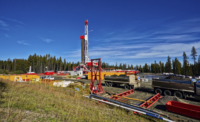Fracking workers exposed to silica above RELs

 Researchers from the National Institute for Occupational Safety and Health (NIOSH) have uncovered evidence that gas and oil workers may be exposed to dangerously high levels of respirable crystalline silica while performing hydraulic fracturing operations known as “fracking.”
Researchers from the National Institute for Occupational Safety and Health (NIOSH) have uncovered evidence that gas and oil workers may be exposed to dangerously high levels of respirable crystalline silica while performing hydraulic fracturing operations known as “fracking.”
In preliminary data presented last month during a meeting of the Institute of Medicine on The Health Impact Assessment of New Energy Sources: Shale Gas Extraction, Eric Esswein said that nearly half (47%) of the workers sampled were exposed to levels of silica above OSHA's permissible exposure limits with almost 80% of those sampled exposed above NIOSH's recommended exposure limits.
Seven primary dust generation points were identified, including refilling/hot loading and release from top hatches, T-belt operations, and the "dragon's tail." Esswein also discussed possible means of prevention through design.
Inhalation of respirable crystalline silica particles has long been known to cause silicosis, a disabling and sometimes fatal lung disease. For more information, visit OSHA's Safety and Health Topics page on Crystalline Silica.
Looking for a reprint of this article?
From high-res PDFs to custom plaques, order your copy today!






